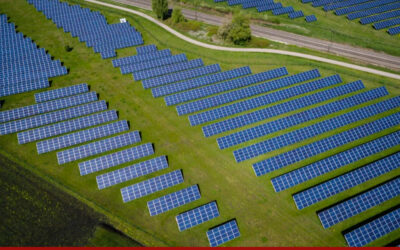Shortages in the labor market; ports that can’t offload container ships; rising prices–it’s a recipe for a stuff shortage. Taming the supply chain is going to take a concerted effort on many fronts.
File this under TMI (too much information): I have a colonoscopy scheduled, and at the moment New York City seems to be completely out of bowel prep liquid. The shortage is expected to continue through spring. OK, I understood the earlier toilet paper and grocery shortage, but this one has me scratching my head about the precarious state of our society’s supply chain for goods.
Even the most uninformed consumer can see the holes on the shelves in their local grocery store. Many are probably already deep freezing in-case-I-can’t-get-one-later Thanksgiving turkeys. The President has stepped into the picture, announcing an agreement he helped negotiate so the Port of Los Angeles can operate 24/7 to try and break the log jam that’s leaving scores of ships waiting offshore to be unloaded. Walmart, FedEx, UPS, Samsung, and other superpowers of stuff have committed to working around the clock. Home Depot, Target, and Costco, among others, have taken to chartering their own ships to get products to the U.S. faster.
“I think Johnny is going to get a back-order slip in his stocking this year,” quipped Robert Handfield, a supply chain expert at North Carolina State, in this NYT story about the global demand freak-out. “The congestion makes the ship that got wedged in the Suez, snarling traffic for six days, look like a fender bender on a country road,” said Stephen Lamar, the president and chief executive of the American Apparel and Footwear Association, in another NYT story.
We Love Our Stuff
The bottom line? We can’t get our stuff. Shortages in the labor market; ports that can’t offload container ships; rising prices–it’s a recipe for a stuff shortage. And with the holidays around the corner! Could they be stuffless?
Good sources tell me, off that record, that this is a real outlier in the normal supply and demand model. A Mckinsey report looking at 2022 says that typically, after economic downturns, “consumer confidence returns, and so does spending”. We’ve had a rebound in demand as the pandemic abates. But we’ve got no supply, and not enough people to get what supply there is to us, or to sell it to us when it arrives. There are serious shortages both of truck drivers and retail employees. For a quick overview of the stuff problem read Marketplace’s description of the many bottlenecks that separate us from our stuff.
Do We Have Too Much Stuff?
Could this be The Great Recalibration? A recent Stephen Colbert monologue calls our stuff the thing that unites us. “Because of COVID lockdowns and labor shortages and a lack of shipping containers, everything you want is either not made yet, stuck on a boat, or waiting for a trucker who can’t drive because the Gatorade bottle he needs to pee in is stuck on a boat or hasn’t been made yet.” According to 21 statistics on Becoming Minimalist, we’re badly over-stuffed. There are 300,000 items in the average American home (LA Times); the average size of that home has nearly tripled over the past 50 years (NPR); and one out of every 10 Americans rents offsite storage—the fastest-growing segment of commercial real estate for the past four decades (New York Times Magazine).
We Make Too Little Stuff
Adding insult to the injury of our stufflessness, we don’t make most of the stuff we want here in the U.S.. Our stuff is mostly produced in Asia, especially China. A big chunk of apparel, electronics and autos are made elsewhere. Just 28 percent of computer and electronic products and 48 percent of automobiles Americans purchased in 2015 were domestically made, according to the Department of Commerce, and I suspect that number has only decreased. Cheap labor and shipping made manufacturing offshore a better investment. The countries that make our stuff are facing worker shortages of their own. Movements to shop locally and buy locally-made goods are having their moment, but America is not yet well tooled to do this at scale.
We Need More Agility
One thing we certainly don’t make enough of are semiconductors. Toyota said Friday that it would cut November auto production targets at home and abroad by as much as 15 percent as the pandemic and a global semiconductor shortage have made it difficult for the Japanese automaker to meet its manufacturing goals. But more agile companies, in particular Tesla, figured out how to turn on a dime. Tesla created new firmware for chips it could get, rather than wait for the ones it couldn’t.
Valencell, producer of many chips we use in wearable devices, also did the firmware pivot. I spoke with Steven LeBoeuf, Ph.D., the company’s president and co-founder, who told me the two smartest decisions the company made (in hindsight) were to identify a supply-chain management firm and focus on writing code, and not produce any chips of its own. “Over the years our investors often asked us why we didn’t consider fabricating our own chips,” he said. But LeBoeuf says the company chose to focus on writing code that could be tuned for any chip available. “It’s been chaotic and extremely dynamic, almost schizophrenic, because you’ll get one report about supply in the morning and then an update later in the day,” said LeBoeuf.
We Need Different Logistics
The entire supply chain needs a revamping. Some bright spots in retail for 2022 will be the creation of micro-fulfillment centers (MFC), which are, in effect, small warehouses placed near end points where consumers live. Over $300 million of VC money has gone to robotics companies developing technology for such MFCs, said Michael Jordan, retail research manager at ShopCore, a large commercial shopping center property manager. Dozens of MFCs are now open, including some making news like GoPuff. Kroger announced it is building two smaller-size automated fulfillment facilities with technology partner Ocado. Walmart will build a giant technology-driven distribution center for fresh and frozen grocery items, and has selected Spartanburg County, S.C., as the site for this new 720,000-square-foot facility, its largest ever. Set to open in 2024, it will employ more than 400 full-time workers and feature automation, robotics and machine learning to process twice the amount of goods that could be moved by a traditional center. These high-tech facilities will ultimately focus on “dark store” fulfillment, meaning consumers never go there, but it delivers their stuff either curbside or on the front steps. Think of this new trend like mini Amazon warehouses, designed to move the supply chain closer to you.
In the apparel industry, tech companies like EVRYTHNG Product Cloud, are creating digital identities for physical goods helping brands gain more visibility and transparency into their supply chain. Currently, they work with global apparel brands like Ralph Lauren to track and trace products across the product lifecycle, from factories and into the hands of the consumers who can scan QR codes to authenticate the products and learn more about the history of the products and get other branded content and experiences.
Taming the supply chain is going to take a concerted effort on many fronts. Consumers are going to have to reassess the stuff in their lives and how quickly they need it at their doorstep. Retailers are going to need to tech-up their spaces, re-thinking physical stores as mini-fulfillment centers. Supply chain experts are going to need to start looking at blockchain and other methods of tracking who’s moving what where, to bring more efficiency to everything from inventory management to clogged ports and pipelines.
As for me — the doctor had a stash of not-for-resale prep samples. And I’m just fine.
Source: https://techonomy.com/the-stuff-shortage-is-a-first-world-problem/




